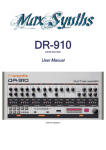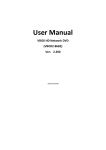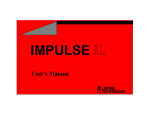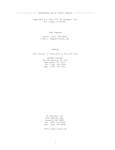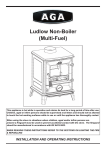Download User Manual
Transcript
User Manual
- Crisalys Main Interface -
TABLE OF CONTENTS
Welcome...........................................................................................................................................................
Introduction.......................................................................................................................................................
Features...........................................................................................................................................................
System Requirements......................................................................................................................................
End User License Agreement...........................................................................................................................
Credits..............................................................................................................................................................
Installation........................................................................................................................................................
Overview...........................................................................................................................................................
Interface Controls.............................................................................................................................................
3
3
4
4
4
6
7
7
9
Oscillators........................................................................................................................................................ 12
Waveforms................................................................................................................................................... 12
Oscillators' Internal Modulators................................................................................................................... 13
Filters............................................................................................................................................................... 14
Filter Types.................................................................................................................................................. 14
LFO Knob and Filters' Lfos.......................................................................................................................... 15
Suggestions on Filter Usage........................................................................................................................ 15
Modulation........................................................................................................................................................ 16
Velocity........................................................................................................................................................ 16
Aftertouch..................................................................................................................................................... 16
Modulation Wheel........................................................................................................................................ 16
Pitch Bend.................................................................................................................................................... 16
Step LFOs.................................................................................................................................................... 17
AUX Envelopes............................................................................................................................................ 17
LFO 1-2-3-4................................................................................................................................................. 18
Modulation Wheel to Vibrato (MW-VIB)....................................................................................................... 18
Modulation Matrix........................................................................................................................................ 19
FX..................................................................................................................................................................... 20
Flanger......................................................................................................................................................... 20
Delay............................................................................................................................................................ 21
Compressor................................................................................................................................................. 21
Reverb......................................................................................................................................................... 22
Sequencers...................................................................................................................................................... 23
Sequencers Control..................................................................................................................................... 23
Sequencers Edit.......................................................................................................................................... 24
Note Editing................................................................................................................................................. 24
Sequencers Menu........................................................................................................................................ 25
Main Controls................................................................................................................................................... 26
Tips on CPU Usage.......................................................................................................................................... 26
MIDI Controllers................................................................................................................................................ 27
Contact............................................................................................................................................................. 28
Welcome
Thank you for purchasing MaxSynths' Crisalys VSTi!
Crisalys is the result of a hard and very difficult job. To achieve the final result has been
necessary a considerable effort which required a lot of hours of work, research and care.
The goal was to create an instrument with interesting audio characteristics which can be
useful either as a tool for studio production or for live performance. Has been very difficult
but I can say to be more than satisfied with the final product. I would like to thank the
people which supported me in this work, the beta team, sound designers, all those that
believed in this project and the people which decided to support us choosing this product.
Have fun with Crisalys!
Introduction
Crisalys is a software synthesizer characterized by a powerful audio engine which can
work up to 192Khz. The three oscillators are driven by custom waveforms designed
specifically to grant top quality sound in any situation. Each oscillator has built-in FM,
Ring Modulator and Cross Modulation options controlled by three separate internal LFOs.
The Ring Modulator can achieve sound characteristics that can go beyond the common
sonorities of this effect, thanks to an internal custom circuit which has been developed for
this purpose.
The classic waveforms (sine, saw, square, etc.) are coupled in combined modes
(saw+square, sine+triangle, etc.) to offer a great sonic impact and can easily emulate the
classic sound of the synthesizers of the past or the typical sound of the modern virtual
analog synthesizers. The custom waveforms offers a way to explore new sound territories.
The audio path continues through two multifilters which can operate as state variable
filters, analog emulations or in EQ mode. The available filter types are:
State Variable: 12dB Low Pass, 12dB High Pass, 12dB Band Pass, 24dB Low Pass, 24dB
High Pass; Analog Emulation: 24dB LP Analog MG (inspired by classic Moog filters),
24dB LP Analog MS (inspired by Korg MS filter type), 24dB XP Model (custom filter type
with a fat and aggressive sound); EQ: EQ Notch, EQ Peak, EQ Low Shelf, EQ High Shelf.
The modulation section offers, in addition to the classic controls (modulation wheel,
aftertouch, velocity, etc.), four LFOs, two aux envelopes and two step LFOs which can be
used as modulation sources to create atmospheric pads, control the filters, create
rhythmic sequences and so on. Each LFO has a special "Quantize" control which can be
used to introduce a small (or huge, if turned fully clockwise) variation to the LFO wave and
sync speed. Used on pads this can produce interesting effects, adding some granulosity to
the sound. As usual the only limit is the imagination!
The effect section includes a classic stereo flanger, a delay (which can work in classic or
cross mode), a compressor and a reverb.
Crisalys features eight built-in step sequencers (up to 32 steps) which can work all at the
same time. The active pattern can be edited manually or recorded in realtime using an
external MIDI keyboard. Each note has separate controls for gate and velocity. The overall
gate level of each sequencer can be controlled by a dedicated knob. The sequencer
patterns can be stored in the hard disk as separate pattern files or as a bank of 64
patterns. The sequencers can be played back in seven different modes:
forward, backward, forward+backward1,
backward+forward2, random.
forward+backward2,
backward+forward1,
The main controls include: volume, balance, portamento, Mono-Legato-Poly selection,
main ADSR envelope, modulation wheel to vibrato controls and a three band equalizer
(Low-Mid-High).
Features
•
•
•
•
•
•
•
•
•
•
•
3 Oscillators with 18 custom waveforms
built-in frequency, ring and cross modulation per oscillator
filter routing option
tuning and pitch bend options per oscillator
2 multi filters with 12 different filter modes (including custom designed filters and
analog emulations)
built-in modulation options per filter
Modulation section: 4 LFOs, 2 AUX envelopes, 2 step sequencers
Modulation matrix with 5 assignable sources and 16 fixed destinations
FX section: flanger, delay, compressor, reverb
Eight powerful 32 notes sequencers able to load up to 64 patterns
Custom audio engine for high quality audio
System Requirements
MINIMUM SYSTEM REQUIRIMENTS: PC running WinXP, Vista or W7, CPU 2Ghz with
SSE2 support, 1GB RAM, soundcard with ASIO drivers, compatible ASIO host.
End User License Agreement
License Agreement for MaxSynths Crisalys VSTi.
PLEASE READ THIS DOCUMENT BEFORE INSTALLING THE SOFTWARE.
Crisalys VSTi Plugin is copyrighted © 2011 by Massimo Bosco (the "Author"). All rights
are reserved all over the world.
This End User License Agreement is a legal agreement between you (the "User") and the
Author. Using this VSTi plugin (the "Software") you agree to the terms and conditions of
this license agreement.
1) LICENSE (Terms and Conditions)
The Author grants you a nonexclusive license to install and use the software on the
following terms:
a) This software can be used for any private, public, or commercial project or use without
limitations but in full respect of the terms of this agreement.
b) To prevent illegal distribution of the software every single copy of the software is
watermarked with a code that corresponds to the owner of the copy.
c) In respect of the term above (1-b) the user may not distribute, lend, rent or sell his
personal copy of the software for any reason. The user may not distribute his personal
copy of the software in any way.
d) According with term 1-b, the user is aware that his copy of the software is specially
marked in such a way that if the software is illegally distributed or illegally duplicated, he
can be identified and according with International Copyright Laws the Author could decide
to proceed against the user.
e) The user can't sample the factory preset sounds provided with the software and use
them as a source for commercial or free sound libraries (in any known or future format).
f) Every single copy of the software can be installed only on two personal computers.
g) The installation of the software on a computer running as a server is not allowed.
h) The user may not reverse engineer or decompile the software.
2) LICENSE TRANSFER
a) License transfer is allowed prior direct contact with the Author.
b) The license transfer fee for "Crisalys VSTi" is 18€.
c) Both parts, the seller and the new user, must contact us providing their full name and
any required information.
d) Once the license has been transfered to the new user the previous license owner loses
any right to use his copy of the software.
e) According with point 2-d the user must uninstall the software from his personal
computers(s) and delete any file previously delivered to him after the purchasing of the
software.
3) LICENSE EXTENSIONS
The following license extensions are available:
a) Extension of the license for the installation of the software on four personal computers.
The price for this license extension is 40€ and grants to the user the right to install the
Software into four personal computers (instead of two). According to point 1-g the
installation of the software on computers running as servers is not allowed.
b) Extension of the license for schools and professional institutes. These special licenses
are available only for schools or professional institutes and grants the permission to install
the software on several computers.
1. Schools and professional institutes license extension 1: grants the right to install
the software up to 10 single personal computers. Each copy of the software must
be installed on every single personal computer, according to point 1-g the
installation of the software on computers running as servers is not allowed. The
price for this license extension is 600€.
2. Schools and professional institutes license extension 2: grants the right to install
the software up to 15 single personal computers. Each copy of the software must
be installed on every single personal computer, according to point 1-g the
installation of the software on computers running as servers is not allowed. The
price for this license extension is 800€.
3. Schools and professional institutes license extension 3: grants the right to install
the software up to 20 single personal computers. Each copy of the software must
be installed on every single personal computer, according to point 1-g the
installation of the software on computers running as servers is not allowed. The
price for this license extension is 1000€.
4) DISCLAIMER AND WARRANTY
The software is provided "as is" without warranty of any kind. The author is not responsible
for any damage of any kind resulting from the correct or incorrect use of the software.
5) COPYRIGHT
Copyright © 2011 Massimo Bosco. All rights reserved all over the world.
VST Plugin Technology by Steinberg.
VST is a trademark of Steinberg Media Technologies GmbH.
Credits
Concept, programming GUI design and manual by Massimo Bosco.
Beta testing: Michael Ross, DJ Raff, Massimo Bosco, Scott George.
Sound design: Massimo Bosco (MaxS)
EDT Audio (EDT) - www.edtaudio.com
Scott George (AC)
Simon W. Autenrieth (MAsim)
rsmus7 (SM) - www.sounduniverse.de
Additional Modules by David Haupt, Chris Kerry, Nikko and Daz Disley.
Installation
1. Close your host (Cubase, Sonar, etc.).
2. Copy the content of the the zip archive into your VST plugins folder (for example:
"C:\Program Files\VSTPlugins"). Be sure to copy both the dll file and the "Crisalys"
folder.
3. Run your host and do a plugin rescan (refer to your DAW manual).
Overview
- User Interface Overview -
1. Oscillators 1-2-3
2. Filters 1-2
3. Modulation section (sources and modulation matrix)
4. FX section
5. Sequencers controls
6. Main controls
- Sequencers Window -
- Filters LFOs Windows -
Interface Controls
Section Buttons
Clicking on the led button specific sections of the instrument are turned On/Off. Used for:
Oscillators 1, 2 and 3, "Envelope to LFO" option, Filter1 and Filter2 LFOs, Sequencers
and Modulation Wheel to Vibrato (MW-VIB).
Small Led Buttons
Small leds can have different functions inside Crisalys. They are used: as On/Off buttons
for cross modulation (XM); as radio buttons to route the signal of the oscillators to Filter 1
or 2; to open the Filters LFO windows; as a "temporary on" button in the modulation matrix
("reset" function); in the sequencers edit view are used to indicate the active sequencer.
Big Led Buttons
In the FX section are used to turn the selected effect On/Off.
MIDI Thru Button
Used in the sequencer control section to turn master MIDI On/Off. When "on" the incoming
MIDI data is passed thru the sequencer.
Square Buttons
Square buttons are used to switch between two different function states. They are used to:
invert the LFO waveform for Filters LFOs and master LFO1, 2, 3 and 4; in the FX delay
panel this button is used to switch between normal delay and cross delay; in the
sequencers window this button is used as a temporary on button to switch MIDI recording
On/Off.
Switches
Click on it to switch between the available options. Used to: choose the master play mode
(mono, legato, poly); change between LFO1-2 and LFO3-4 windows.
Popup Menus
Clicking on the blu display sections give access to a popup menu which contains the
available options for that section. Used for: oscillator waveform selection, octave,
semitone, pitch bend up/down levels, oscillator modulation options (FM/Ring/FM+Ring),
filter type selection, LFOs waveform, sync options, etc.
Knobs
Crisalys uses two types of knobs: common knobs used to increase the level from
minimum to maximum value (for example volume control, portamento time level, etc.) and
knobs used to control positive/negative values (for example EQ knobs, balance knob, fine
tuning knobs, etc.). This type of knobs have an orange mark which indicate that the knob
is set to central position (output value = 0). All knobs type have a linear response.
Right clicking on a knob open a popup menu with the following option:
Learn: turns MIDI learn on. Move a control (knob, fader, button, etc) on your hardware
MIDI controller to associate it with the selected knob on Crisalys.
UnLearn: reset the MIDI controller associated with the selected knob.
Edit...: open a dedicated window to manual edit the automation options.
MaxSynths Logo
Clicking on the MaxSynths logo opens the about box which contains credits and license
informations.
Oscillators
Crisalys has three oscillators, each with the following characteristics:
- 18 custom waveforms
- Internal custom engine for high quality audio
- Octave (-1/+1) and semitone selection (+11 semitones)
- Fine tuning control (+/- 50 cent)
- Up and Down settings for pitch bend wheel (+/- 12 semitones)
- Filter routing
- Level control
Internal Modulators:
- Cross Modulation (XM)
- FM
- Ring Modulator with independent envelope and "envelope to LFO"
option
- Internal modulators works in parallel mode
- Three separate internal LFOs for XM, FM, RING (for a total of six
independent internal LFOs)
Waveforms
Saw – Saw waveform
Saw+Square – Saw and Square waveforms
Saw+Triangle – Saw and Triangle waveforms
Sine – Sine waveform
Sine+Square – Sine and Square waveforms
Sine+Triangle - Sine and Triangle waveforms
Square – Square waveform
Square+Square – Square and Sub Square waveforms
Square+Triangle – Square and Triangle waveforms
Pulse 25 – Pulse waveform with 25% pulse width
Pulse 50 – Pulse waveform with 50% pulse width
Pulse 75 – Pulse waveform with 75% pulse width
FM Sine – Frequency modulated Sine waveform
B-aSaw – Detuned analog type Saw waveform
B-Square1 – Modulated Square waveform Type1
B-Square2 – Modulated Square waveform Type2
B-Square3 – Modulated Square waveform Type3
B-Square4 – Modulated Square waveform Type4
Oscillators' Internal Modulators
Each Oscillator has three internal modulator options. The modulators levels can be
controlled by the dedicated knob. FM and Ring Modulation can be used in single or
combined mode (FM/Ring in the popup menu). The available modulators are:
Cross Modulation (XM)
When the XM switch is turned on the Oscillator signal is cross modulated with the audio
signal of an internal oscillator. The internal XM oscillator waveform is fixed to Pulse. The
cross modulation level and the PM depth of the XM oscillator is controlled by the XM
slider. The XM oscillator is phase modulated by the main oscillator signal.
Frequency Modulation (FM)
Selecting "FM" from the popup menu in the osc's mod section turns frequency modulation
on. The Oscillator signal can be frequency modulated with the audio signal of an internal
oscillator. The internal FM oscillator waveform is fixed to Sine; the FM osc pitch follows the
main pitch (as played on your external MIDI keyboard) and the FM level can be controlled
by the FM knob.
Ring Modulation (RING)
Just like for XM and FM also the Ring Modulator has an internal oscillator used to
modulate the incoming Oscillator signal. The internal ring oscillator waveform is fixed to
Sine and the pitch is controlled by the "Ring" knob on the main interface.
The internal oscillator and main Oscillator signals are feed into the Ring Modulator; the
output of the Ring Modulator pass thru an amplitude module controlled by an envelope.
The "A" and "R" controls on the interface are used to control the attack and release time of
the internal envelope, the "env" knob is used to control the envelope amount. The internal
evelope is gated by the incoming MIDI data (note on).
The Ring Modulator has a special "env to lfo" option. When turned on the internal
envelope output is sent to the internal oscillator pitch (see picture below).
- Ring Modulator Internal Circuit -
Filters
Crisalys has two multifilters with the following characteristics:
- 12 filter types
- Modulation Wheel, LFO, Keyboard and Velocity controls
- Envelope
- Pan
- Internal LFO (accessible by clicking the blu led) with the
following features:
- Wave selection (Sine, Triangle, Saw, Ramp, Pulse)
- Wave Invert function
- Quantize option (used to introduce some granulosity to the
selected waveform)
- Sync
Filter Types
12dB Low Pass - 12 decibel low pass filter
12dB High Pass - 12 decibel high pass filter
12dB Band Pass - 12 decibel band pass filter
24dB Low Pass - 24 decibel low pass filter
24dB High Pass - 24 decibel high pass filter
24dB LP Analog MG – 24 decibel low pass filter (analog emulation). Modelled after Moog
analog type filters
24dB LP Analog MS – 24 decibel low pass filter (analog emulation). Inspired by the Korg
MS-10 ans MS-20 filters
24dB XP Model – 24 decibel custom filter. The internal circuit of this filter works like a
combination of different filters types
EQ Notch - notch equalizer
EQ Peak - peak equalizer
EQ Low Shelf - low shelf equalizer
EQ High Shelf - high shelf equalizer
MW, KEY and VEL knobs
These knobs specify how much the modulation wheel (MW), the keyboard note (KEY) and
the velocity level affects the filter cut off. These controls accept positive or negative
values.
LFO knob and Filters' LFOs
Like the previous controls this knob set how much the filter LFO affects the filter cut off. In
order to use it as a modulator the filter LFO needs to be activated by clicking the small blu
led next to the knob and clicking the filter LFO section button.
OPTIONS:
- Waveforms selection (Sine, Triangle, Saw, Ramp, Pulse)
- Sync (2b - 1/32)
- Wave Invert: invert the selected waveform
- Quantize introduce some granulosity to the selected waveform
TIP: Ramp and Pulse waveforms can be useful to create
classic bass lines. Example: select the init patch; set the filter
type to "24dB LP Analog MG"; turn ENV, CUT and RES to zero;
set the LFO knob fully clockwise; open the Filter LFO window
and use these settings: wave=pulse, sync=1/4, invert=on
(pressed). Press a note on your keyboard: the synth playback a
typical trance bassline. The invert function makes the bass
sound play alternated to the first beat (for example a bass
drum).
Suggestions on filter usage
– Route Oscillator1 to Filter1 and Oscillator2 to Filter2, set different filter parameters
and pan Filter 1 hard left and Filter 2 hard right
– Use the Filter LFO with slow sync setting on pad sounds
– Use the Filter LFO to create rhythmic parts
– Experiment with the Filter LFO Quantize function
– Use the VEL knob (velocity) to control the Filter Cut Off on bass sounds
– Automating the filter Pan in the modulation matrix can produce interesting effects
– Modulate the Cut Off with the Filter LFO and with one of the available LFOs using
different waveform and sync settings
– Experiment with the "24dB LP Analog MS" filter type to produce high resonating
sweep sounds
– Experiment with the "24dB XP Model" filter on bass sounds
– Use the "24dB LP Analog MG" (Moog type) to recreate classic synth sounds
Modulation
The lower part of the user interface is occuppied by the modulation section:
- Modulation Section -
The available modulators are used as modulation sources for the modulation matrix
(except the "MW-VIB" option). The available modulators are:
Keyboard (KEY)
The pitch of the note played on the keyboard affects the level of modulation sent to the
destination.
Velocity (VEL)
The velocity level (how much hard a key is pressed) affects the level of modulation (for
example a note played hard can open the filter cut off).
Aftertouch (AT)
After a note has been struck the additional pressure on it affects the modulation level.
Modulation Wheel (MW)
The modulation level is controlled by the modulation wheel position.
Pitch Bend (PB)
The modulation level is controlled by the pitch bend position.
Step LFOs
- Step LFOs -
The two Step LFOs allows to set the modulation amount for each of the 16 available steps
using the mouse to draw the modulation curve. Pressing the "CTRL" button allows to fine
tune the step value.
Next to each Step LFO there are the sync options (1/1 - 1/64).
The control below the sync options allows to set the Step LFOs play mode (left mouse
click to switch between the available options):
Key Trigger (KEY): the Step LFO position is set to the first step on the first incoming
"note-on" message.
Free Run (FREE): the Step LFO runs free and it's not synced to any internal or external
event.
AUX Envelopes
- AUX Envelopes -
Two envelopes that can be used as additional envelopes for the filters or as modulation
sources.
LFOs 1-2-3-4
- LFOs 1/2 -
- LFOs 3/4 -
Four LFOs with the following options:
– Sync (2/b – 1/32)
– Waveform selection (Sine, Triangle, Saw, Ramp, Pulse)
– Waveform Invert option
– Quantize knob
The LFOs 1, 2, 3 and 4 are triggered by the first incoming Note-On message.
Click on the switch next to the LFOs in order to switch between LFO1/2 and LFO3/4 views:
Modulation Wheel to Vibrato (MW-VIB)
- MW to Vibrato -
When "on" the Modulation Wheel position controls the vibrato amount. The vibrato depth
and frequency ("hz" – hertz) can be set with the relative knobs.
Modulation Matrix
- Modulation Matrix -
In the modulation matrix a source signal can be routed to one of the available
destinations. Crisalys' Modulation Matrix features 5 selectable sources (on the left side)
and 16 fixed destinations.
SOURCES: Keyboard (KEY), Velocity (VEL), Aftertouch (AT), Modulation Wheel (MW),
Pitch Bend (PB), LFO1, LFO2, LFO3, LFO4, Step1, Step2, AUX Envelope1 (AUX1), AUX
Envelope2 (AUX2).
DESTINATIONS: Pitch (global pitch), Filter1 Cut Off (CUT1), Filter2 Cut Off (CUT2),
Filter1 Resonance (RES1), Filter2 Resonance (RES2), Filter1 Pan (PAN1), Filter2 Pan
(PAN2), OSC1 Cross Modulation (XM1), OSC2 Cross Modulation (XM2), OSC3 Cross
Modulation (XM3), OSC1 FM level (FM1), OSC2 FM level (FM2), OSC3 FM level (FM3),
OSC1 Ring level (RING1), OSC2 Ring level (RING2), OSC3 Ring level (RING3).
For modulation to occur you need to set up a modulation source and set the amount of
modulation in the matrix. Holding the CTRL key while editing a value allows to fine tune
the parameter.
Note that in order to use XM, FM and RING as destinations they must be set to "on" as
modulators in the Oscillator.
The "reset" button in the top left corner allows to clear the modulation matrix (all values
are set to zero).
FX
- Effects Chain -
The effects section consists of four sound effects stacked in series. The first effect in the
chain is the flanger, followed by the delay, compressor and reverb. All effects works in true
stereo mode. The effects can be selected by clicking on the top tabs in the FX section:
Flanger
- Flanger -
The stereo flanger features the following controls:
ON/OFF BUTTON: turn on/off the flanger.
RATE: specify the "speed" of the flanger effect.
DEPTH: allows to set the modulation depth applied by the flanger to the original signal.
PHASE: shift the phase of the signal to create a wider stereo effect (from 0° to 180°).
FEEDBACK: specify the level of the feedback (the output of the flanger is sent back to the
input)
DRY/WET: set the level between the dry and the processed signal.
Delay
- Delay -
The stereo delay features an internal filter to shape the delayed effect (note: to avoid the
delayed signal to be affected by the filter set the cutoff knob fully clockwise and the
resonance knob to zero, like in the above picture). Stereo delay controls:
ON/OFF BUTTON: turn on/off the delay effect.
SYNC L/R: specify the time divisor for the left and right channels.
NORMAL/CROSS: switch between "normal delay" and "cross delay" ("ping-pong"). When
the square button is pressed the delay works in "cross" mode.
CUT: set the cut off level of the delayed signal.
RES: set the resonance level of the delayed signal.
FEED: specify the level of the feedback.
MIX: set the level between the dry and the processed signal.
Compressor
- Compressor -
The dynamic processing can be controlled by a stereo hard-knee compressor. The
compressor has been insert before the reverb to give to the processed signal a more
natural sound. The controls available are:
ON/OFF BUTTON: turn on/off the dynamic processing.
THRES: set the threshold level.
RATIO: specify the compression ratio.
ATTACK: set the attack level.
RELEASE: set the delay level.
GAIN: increase the output level to compensate the signal reduction.
Reverb
- Reverb -
ON/OFF BUTTON: turn on/off the reverb effect.
SIZE: specify the simulated room size.
WIDTH: specify the simulated room width by increasing or decreasing the space occupied
by the wet signal in the stereo field (when set to zero the output wet signal is mono).
DAMP: as the reverb fades so do certain frequencies. This knob permits to specify the
damped signal frequency.
MIX: set the level between the dry and the processed signal.
Sequencers
Crisalys has 8 built-in step sequencers (up to 32 steps) which can be played back in realtime. The patterns MIDI out is routed to the active Oscillators.
The sequencers have a save/load function which allows to store and recall the previously
edited pattern(s) which can be saved as single files or as a bank of 64 patterns.
The Sequencer section is divided into two part: the "sequencers control" area visible on
the main interface and the "sequencers edit" window accesible by clicking on the "edit
icon".
Sequencers Control
The following controls are available in the "sequencers contol" area:
- ON/OFF section button: turns the sequencers on/off.
- PLAY MODE: select between one of the availeble play modes
(Forward, Backward, Forward+Backward1, Forward+Backward2,
Backward+Forward1, Backward+Forward2, Random).
- ROOT OCTAVE: allows to transpose the sequencers by choosing
the root octave for the active patterns.
- SYNC: specify the sync divisor for the sequencers.
- EDIT: clicking the small screenshot area opens/close the
"sequencers edit" window.
- THRU: when "on" the incoming MIDI flow is sent to the Oscillators
thru the sequencers. In other words the Oscillators are played both
from the incoming midi notes and from the sequencers. Turning off
the MIDI thru button simply turns off the main MIDI in which is used
only to trig the sequencers. Most of the time it is not necessary to
keep the MIDI thru button on when using the internal sequencers to
playback a pattern.
Note that the settings in the "sequencer control" area affects all the active sequencers and
patterns.
Sequencers Edit
The following options are available in the "sequencers edit" view:
REC: enable MIDI recording for the current pattern. The notes can be entered by play on
the external MIDI keyboard. Once you have finished with the recording click on the "rec"
button again to stop recording.
STEPS: specify the lenght in steps of the sequencers' patterns (apply to all sequencers).
SEQ BUTTONS: these buttons are used to switch between the available sequencers.
Clicking on one of these buttons displays the active pattern for the selected sequencer.
PATTERN: specify the pattern in use in the sequencer.
GATE: set the gate level for the selected sequencer.
Note Editing
Click on an empty slot to insert a note. The note name and octave are displayed on the
status bar located in the upper part of the sequencer edit window:
The up and down arrows (on the right side of the status bar) are used to move the
sequencer grid vertically. The "+" and "-" symbols are used to zoom in or out the grid view.
Clicking on a note opens a popup menu with the following options:
Velocity: set the velocity level for that note.
Gate: set the gate level for that note.
Delete Note: delete the selected note.
PLEASE NOTE: THE "CHANNEL" AND "OUTPUT" OPTIONS ARE RESERVED FOR FUTURE USAGE.
Sequencers Menu
Click on the status bar to access the sequencers menu:
The available options are:
Edit Pattern: select the pattern to be edited.
Copy from Pattern: copy the content of the selected pattern to the current pattern.
Load Pattern: load a previously saved pattern into the current pattern.
Load Pattern Bank: load a previously saved bank of 64 patterns.
Save Pattern: save the current pattern as a single file (*.pat)
Save Pattern Bank: save all patterns as a bank (*.pbn)
Main Controls
- Main Controls -
The main controls are located in the upper part of the interface:
EQ (LOW-MID-HIGH): three band equalizer.
ADSR: main envelope controls.
POR: portamento time. Note: the portamento is available only in "mono" and "legato" play
modes.
VOL: master volume.
BAL: master balance (left/right).
PLAY MODE: switch between the three available play modes: "mono", "legato", "poly".
Tips On Cpu Usage
Under some circumstances Crisalys can be very heavy on CPU. To avoid to run out of
CPU power it's a good idea to follow some suggestions:
– In the main envelope try to keep the decay and release values as small as possible.
High release time values causes high CPU loads.
– If you don't need a particular function then turn it off. For example if the Oscillators'
modulator is set to "OFF" the FM and Ring knobs should be set to zero. When
these knobs are set to their minimum value the internal circuit is automatically
turned off resulting in a smaller CPU usage.
– Effects: if you are using a lot of instances of Crisalys with the same reverb it is
better to use an external reverb and send the output signals to it.
– Sequencers: short "Gate" levels helps to use less CPU.
– If you really run out of CPU remember that almost all modern DAWs have a "freeze"
option which give to the user the possibility to spare a lot of CPU!
MIDI Controllers
CC#007
Main Volume
CC#074
Filter1 Cut Off
CC#010
Main Balance
CC#071
Filter1 Resonance
CC#005
Portamento Time
CC#052
Filter1 LFO Quantize
CC#073
Main Attack
CC#046
Filter2 Cut Off
CC#075
Main Decay
CC#047
Filter2 Resonance
CC#076
Main Sustain
CC#053
Filter2 LFO Quantize
CC#072
Main Release
CC#054
LFO1 Quantize
CC#077
EQ Low
CC#055
LFO2 Quantize
CC#078
EQ Mid
CC#056
LFO3 Quantize
CC#079
EQ High
CC#057
LFO4 Quantize
CC#020
OSC1 on/off
CC#041
MW-VIB on/off
CC#021
OSC2 on/off
CC#042
MW-VIB Depth
CC#022
OSC3 on/off
CC#043
MW-VIB Hz
CC#023
OSC1 Fine
CC#092
Flanger Dry/Wet
CC#024
OSC2 Fine
CC#096
Flanger Rate
CC#025
OSC3 Fine
CC#097
Flanger Depth
CC#026
OSC1 Level
CC#102
Flanger Phase
CC#027
OSC2 Level
CC#103
Flanger Feedback
CC#028
OSC3 Level
CC#093
Delay Mix
CC#029
OSC1 FM Level
CC#094
Delay Cut Off
CC#030
OSC2 FM Level
CC#095
Delay Resonance
CC#031
OSC3 FM Level
CC#091
Reverb Mix
CC#032
OSC1 Ring Level
CC#033
OSC2 Ring Level
CC#034
OSC3 Ring Level
Contact
For any kind of problem feel free to contact us through our website:
http://www.maxsynths.tk
Email: [email protected]
Milano, ITALY - January 2011
(C) Copyright 2011 Massimo Bosco – All Rights Reserved




























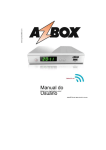
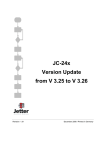
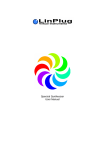
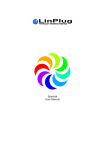
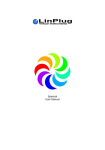

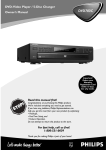
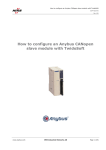
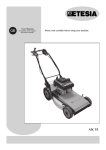
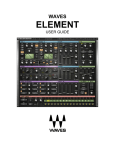
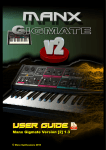
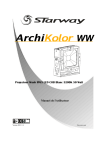
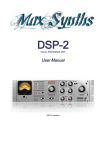
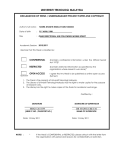

![ManyGuitar user manual [november 2005]](http://vs1.manualzilla.com/store/data/005861536_1-a0b937985b357a67600aa3c9a5e7e46a-150x150.png)
